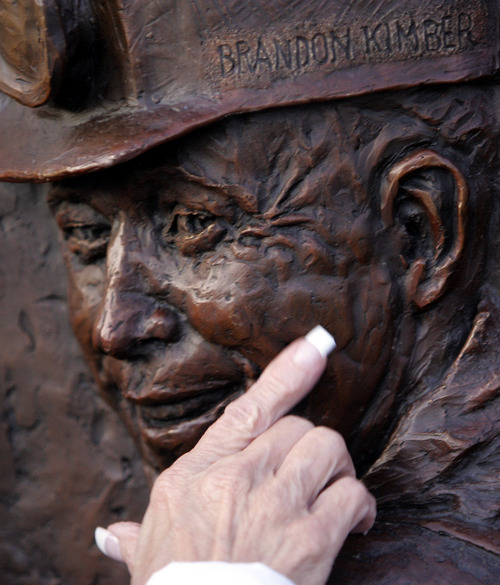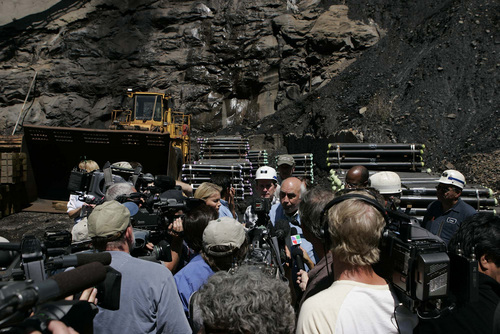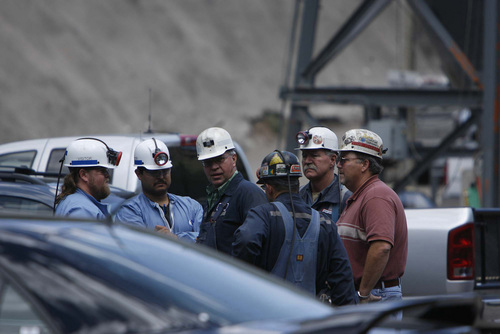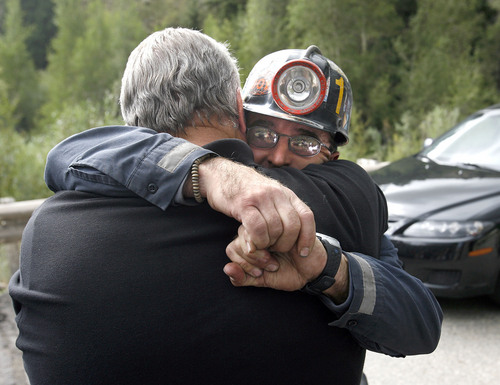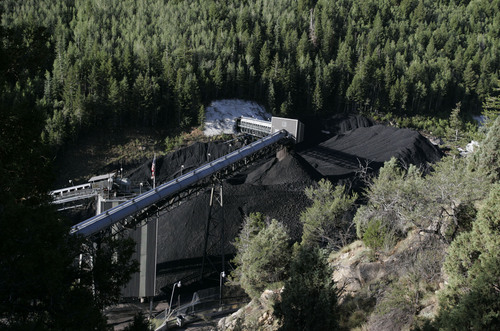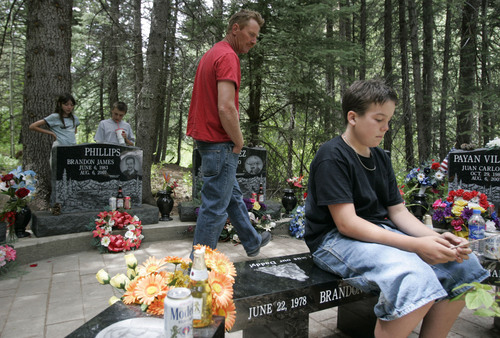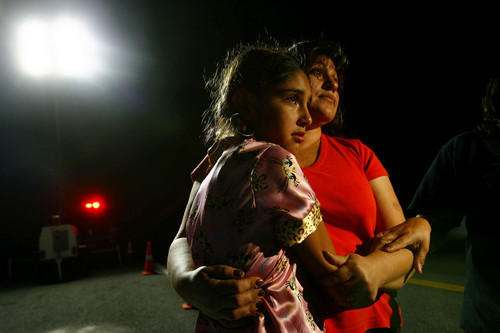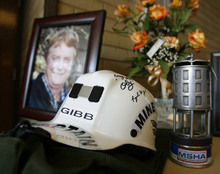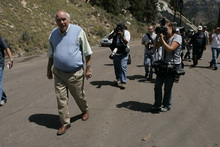This is an archived article that was published on sltrib.com in 2013, and information in the article may be outdated. It is provided only for personal research purposes and may not be reprinted.
A Colorado engineering company will pay a $100,000 fine for a "high-negligence violation" of mine-safety laws leading up to the 2007 Crandall Canyon mine disaster.
The federal Mine Safety and Health Administration (MSHA) announced Wednesday it had settled its case against Agapito Associates Inc. of Grand Junction.
If approved by a judge, the settlement will end the federal government's legal proceedings involving the disaster, which began Aug. 6, 2007 when the walls of the Emery County coal mine blew in over a half-mile area of underground tunnels, burying a six-man crew.
Ten days later, another implosion blasted a crew of rescuers burrowing their way through rubble-filled tunnels toward the missing men. Two miners and an MSHA inspector died. Six others were injured.
MSHA's formal disaster investigation pinned most of the blame on the mine's operator and co-owner, a subsidiary of Ohio-based Murray Energy Corp., which agreed in September 2012 to pay $950,000 in civil penalties.
Genwal Resources, the Murray Energy subsidiary, also pleaded guilty in U.S. District Court for Utah to two criminal misdemeanors for willful violation of federal health and safety standards. That fine was $500,000.
Agapito was initially charged in MSHA's investigation with a flagrant violation, which had a maximum penalty of $220,000.
Agency investigators determined Agapito's flawed engineering analysis of the mining area deep beneath East Mountain led to an unsafe mine design, with roof-supporting coal pillars that were too small to hold up the mountain overhead as miners engaged in retreat mining, also known as pulling pillars.
That hazardous mining process involves crews excavating those pillars as they back out of the mine, allowing the unsupported roof to collapse behind them.
"With this settlement, Agapito takes responsibility for its role in the tragic mine collapse at Crandall Canyon," said MSHA leader Joe Main. "… When you look at the size of the penalty for a contractor, and the fact they have agreed to a high negligence finding, that's a sizable end result for the closure of this case."
Agapito Associates President Mike Hardy released a statement later Wednesday, saying that while his company "disputes MSHA's allegation of flawed engineering analysis, the firm recognizes MSHA's enforcement mandate and agreed to cooperate with MSHA in accepting a reduced, nominal citation as a step toward closure of the case."
A Murray Energy spokesman declined comment.
News of the settlement stirred a muted response from the victims' survivors.
Ed Havas, a Salt Lake City attorney who helped represent many survivors in a civil wrongful death and injury lawsuit against Murray Energy (resolved in 2008 for an undisclosed amount), said family members he talked to "were made aware of the [Agapito] settlement but do not wish to comment further."
Contacted by The Tribune, Steve Allred of Cleveland said he did not care about the fine imposed on Agapito in the death of his brother, Kerry, one of the original six trapped miners.
"My wrath really sticks with [mining company boss] Bob Murray and a lot of people under him," Allred said. "Somebody had to have known how dangerous it could be and were keeping their fingers crossed every day hoping it wouldn't happen. But then, sure as shit, it did."
Wendy Black, whose husband Dale was one of the rescuers killed on Aug. 16, dismissed the settlement as "the best they could do" and reserved her harshest remarks for MSHA, which she has long blamed for being lax in plan approval and enforcement.
"I won't be satisfied until somebody can hold MSHA accountable," she said.
Kevin Stricklin, head of MSHA's coal mine safety division and a key figure in the Crandall Canyon rescue effort, said his agency did learn from the disaster.
"We realized after Crandall Canyon that we could do better and implemented things to get us there," he said, citing more rigorous approval processes for plans involving mining at great depths and retreat mining.
Only one miner involved in retreat mining has died since Crandall Canyon, Stricklin said. That was Huntington resident Elam Jones, who was involved extensively in the 2007 rescue operation. He died March 23 in a roof fall at the Rhino mine near the mouth of Huntington Canyon, a few miles from Candall Canyon.
MSHA's investigation of that accident will be out soon, Stricklin said.
He added that MSHA inspectors are on the ground more in mines where retreat mining is being conducted. "We visit every month to look first hand at what goes on there and to see if the plan is adequate and protecting miners."
That's some consolation, but not much, for Allred.
"If that's the case," he said, "then at least my brother's life was not taken in vain."
Twitter: @sltribmikeg —
Six miners are still entombed
O The walls of the Crandall Canyon coal mine in Emery County imploded on Aug. 6, 2007, burying six miners. A second implosion Aug. 16 killed three rescuers, injured six more and ended the underground search for the missing six, who remain entombed in East Mountain. —
What's next?
The settlement is subject to approval by an administrative law judge with the Federal Mine Safety and Health Review Commission.



